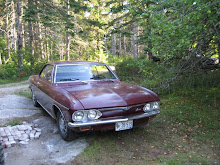Attention is back to automobiles again with the opening of the North American Auto Show in Detroit. Among the attention-getters is the trend towards wireless connectivity between your devices and your automobile.
Automakers have come to learn that consumer technology can change more rapidly that the lead time for automobiles. Stand-alone devices such as GPS's, digital cameras and even laptops might be rendered obsolete by cellphones and tablets - so why incorporate them into automobiles as optional accerssories?
“While we are already working on the cars that will hit the road seven years from now, the next disruptive consumer technology might hit the market in seven months,” Dr. Dieter Zetsche of Daimler said. “A 20-year-old car might be a classic that you love to drive, but do you know anybody who is still using a 20-year-old mobile phone?”
That's a good point that centers of the real question. Should automobiles just become an adjunct to the wireless world or should they retain a connectivity unique to themselves?
When one said their car had a certain "feel," they usually meant the way the suspension and steering let the driver know about road conditions. Cars that isolated you from the road, generally through wallowing suspensions, extra bushings and overly-sensitive power steering, offered little to no "road feel."
Now our sense of connection with the road has more to do with the world off the traveled road - the web. Automakers rushed to make their cars connect, through phone systems like OnStar, to hard drive storage, like MySynch. As one commentator noted, why should automakers seek to create unique devices when apps for smartphone or tablet will accomplish the same things. Who needs a stand-alone GPS if they have their cellphone? Garmin and Tom Tom will likely keep searching for answers to that question.
The larger question is whether we should be letting devices answer all theese questions for us. Imagine a time when you looked at a thermometer, saw that it approached 32 F, and drew the conclusion that you needed to drive with added care because black ice might cover parts of the road. Now luxury auto lines compete with who can provide you with the greatest number of features - ones to alert you of icing conditions [the Rover 3500 offered a primitive version of this in the 1970's], whether an obstacle or child is behind you when you're backing up, even parallel parking. Of course, you could just learn to check the weather, get outside the car and just look, and learn how to maneuver your car into tight places.
Nah!








No comments:
Post a Comment